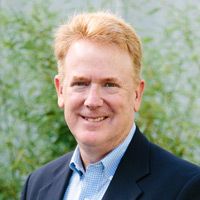How Should YOU Measure Your Investment Performance?
Investors shouldn't be obsessed with their portfolio's performance, but an annual evaluation is key to keeping you on track.


I’ve spent over 25 years in the financial advisory profession but recently had a startling realization about investment performance. During a friendly debate with a friend who manages a small-cap mutual fund, I realized even seasoned investment professionals can have misperceptions about investment performance. My friend had a fixation on top quartile performance, a key measure of his professional ranking, but one with little application in the real world — where clients typically own mutual funds representing various asset classes.
Our debate got me to thinking: How should the average investor measure investment performance? I recommend investors focus on two components of performance:
How is my performance number calculated?
From just $107.88 $24.99 for Kiplinger Personal Finance
Become a smarter, better informed investor. Subscribe from just $107.88 $24.99, plus get up to 4 Special Issues

Sign up for Kiplinger’s Free Newsletters
Profit and prosper with the best of expert advice on investing, taxes, retirement, personal finance and more - straight to your e-mail.
Profit and prosper with the best of expert advice - straight to your e-mail.
How is my account doing relative to a fair benchmark?
Your Performance Calculation
The performance calculation methodology involves two key variables: 1) the mathematical formula used to produce a return figure and 2) the portfolio(s) that are being measured. Most professional money managers use a Global Investment Performance Standards (GIPS) compliant methodology to calculate investment performance. Brokers, Registered Investment Advisers and custodians often provide performance information to clients in their account statements. It is important to ask your provider if their performance report uses an approved GIPS methodology. Time-weighted returns are the most commonly used measure.
Interestingly, GIPS does not require investment performance to be reported net of fees. Consumers would be wise to ask their adviser for performance reports net of fees. After all, it’s not what you earn, it’s what you keep that is important.
Equally important is understanding whether the performance number is specific to your account, or merely a listing of the performance of each mutual fund. According to the GIPS guidance statement on fees, “The GIPS standards are based on the concept of presenting composite performance to prospective clients rather than presenting individual portfolio returns to existing clients (emphasis added).” Very simply, it is permissible for a broker or custodian to show a performance number on your statement for XYZ mutual fund that may or may not be your actual investment performance.
I’ve seen brokerage statements list a client’s various mutual fund’s performance, but not include the client’s overall account performance. Investors should ask their adviser for their specific account’s performance net of all fees. Most advisers have software that can calculate this.
Which Benchmark to Use
What about benchmarks? How can investors gauge their performance relative to other alternatives? This simple question raises many issues.
Should you benchmark your portfolio versus an index like the S&P 500? What’s a fair comparison for a portfolio invested 65% equity / 35% fixed? What about an all-equity portfolio comprised of large-cap, small-cap, international, REITs and emerging markets?
Morningstar provides a quarterly list of average returns by category, which is a reasonable basic benchmark to measure a specific fund. For accounts using a diversified, multiple asset class approach, Morningstar provides returns for different asset allocation funds, sorted by equity ranges. This is a helpful guide should your portfolio be comprised of large-cap, small-cap, international and emerging market funds.
The Bottom Line
While an obsession with performance can be counterproductive (often leading to chasing past winners and inferior performance), an annual review of portfolio performance is something all investors should undertake. Make sure you understand what is being measured and how it is being measured so you can track progress toward your goals.
Profit and prosper with the best of Kiplinger's advice on investing, taxes, retirement, personal finance and much more. Delivered daily. Enter your email in the box and click Sign Me Up.

Mike Palmer has over 25 years of experience helping successful people make smart decisions about money. He is a graduate of the University of North Carolina at Chapel Hill and is a CERTIFIED FINANCIAL PLANNER™ professional. Mr. Palmer is a member of several professional organizations, including the National Association of Personal Financial Advisors (NAPFA) and past member of the TIAA-CREF Board of Advisors.
-
 Samsung Galaxy S25 Ultra for $4.99 a Month: A Closer Look at Verizon’s Deal
Samsung Galaxy S25 Ultra for $4.99 a Month: A Closer Look at Verizon’s DealVerizon’s aggressive pricing makes Samsung’s top-tier phone tempting, but the real cost depends on your plan and how long you stay.
-
 I'm 59 with $1.7 million saved and lost my job. Should I retire?
I'm 59 with $1.7 million saved and lost my job. Should I retire?We asked professional wealth planners for advice.
-
 4 Times to Say Yes to a Roth Conversion and 4 Times to Say No
4 Times to Say Yes to a Roth Conversion and 4 Times to Say NoRoth conversions should never be done on a whim — they're a product of careful timing and long-term tax considerations. So how can you tell whether to go ahead?
-
 A Wealth Adviser Explains: 4 Times I'd Give the Green Light for a Roth Conversion (and 4 Times I'd Say It's a No-Go)
A Wealth Adviser Explains: 4 Times I'd Give the Green Light for a Roth Conversion (and 4 Times I'd Say It's a No-Go)Roth conversions should never be done on a whim — they're a product of careful timing and long-term tax considerations. So how can you tell whether to go ahead?
-
 A 4-Step Anxiety-Reducing Retirement Road Map, From a Financial Adviser
A 4-Step Anxiety-Reducing Retirement Road Map, From a Financial AdviserThis helpful process covers everything from assessing your current finances and risks to implementing and managing your personalized retirement income plan.
-
 The $183,000 RMD Shock: Why Roth Conversions in Your 70s Can Be Risky
The $183,000 RMD Shock: Why Roth Conversions in Your 70s Can Be RiskyConverting retirement funds to a Roth is a smart strategy for many, but the older you are, the less time you have to recover the tax bite from the conversion.
-
 A Financial Pro Breaks Retirement Planning Into 5 Manageable Pieces
A Financial Pro Breaks Retirement Planning Into 5 Manageable PiecesThis retirement plan focuses on five key areas — income generation, tax management, asset withdrawals, planning for big expenses and health care, and legacy.
-
 4 Financial To-Dos to Finish 2025 Strong and Start 2026 on Solid Ground
4 Financial To-Dos to Finish 2025 Strong and Start 2026 on Solid GroundDon't overlook these important year-end check-ins. Missed opportunities and avoidable mistakes could end up costing you if you're not paying attention.
-
 Are You Putting Yourself Last? The Cost Could Be Your Retirement Security
Are You Putting Yourself Last? The Cost Could Be Your Retirement SecurityIf you're part of the sandwich generation, it's critical that you don't let the needs of your aging parents come at the expense of your future.
-
 I'm an Insurance Pro: It's Time to Prepare for Natural Disasters Like They Could Happen to You
I'm an Insurance Pro: It's Time to Prepare for Natural Disasters Like They Could Happen to YouYou can no longer have the mindset that "that won't happen here." Because it absolutely could. As we head into 2026, consider making a disaster plan.
-
 The Future of Philanthropy Is Female: How Women Will Lead a New Era in Charitable Giving
The Future of Philanthropy Is Female: How Women Will Lead a New Era in Charitable GivingWomen will soon be in charge of trillions in charitable capital, through divorce, inheritance and their own investments. Here's how to use your share for good.